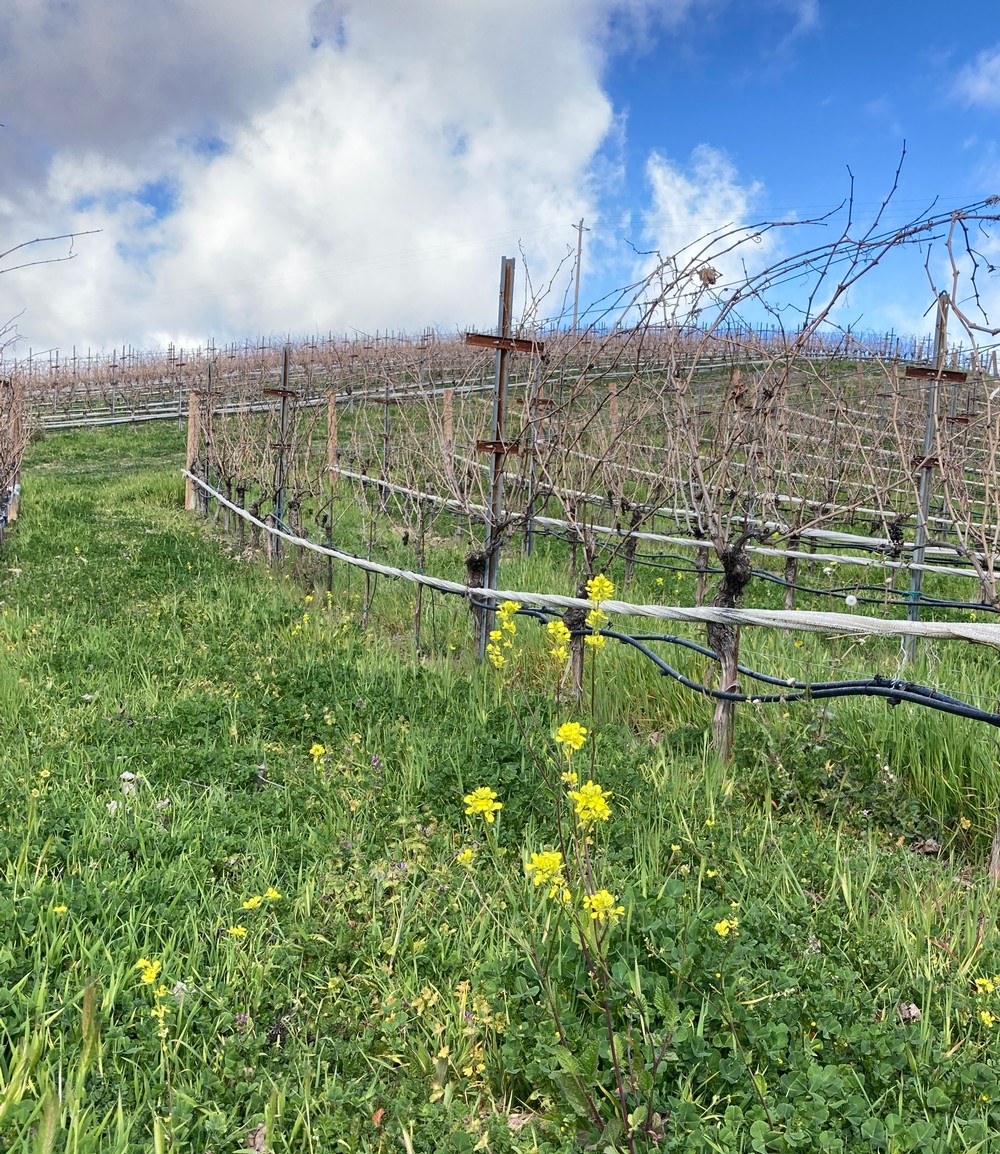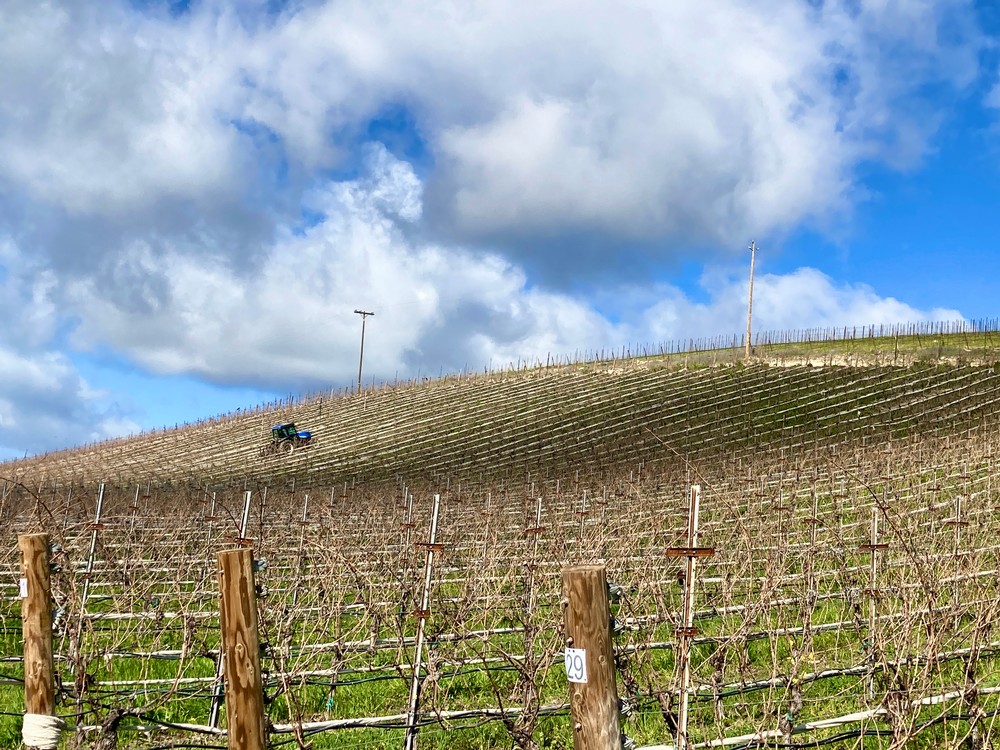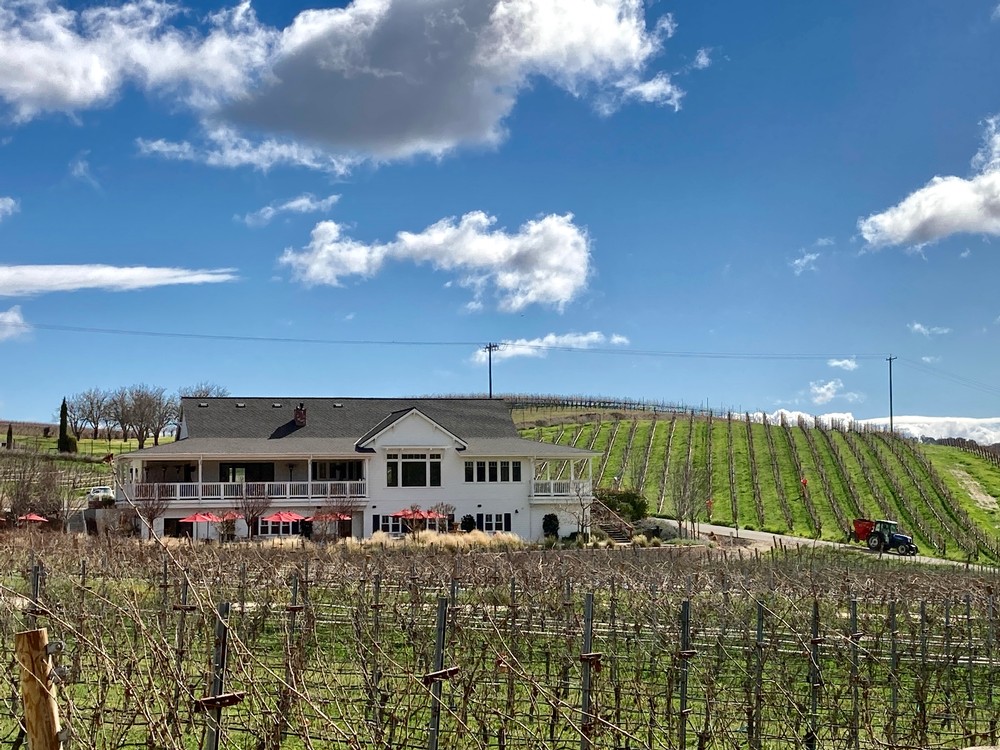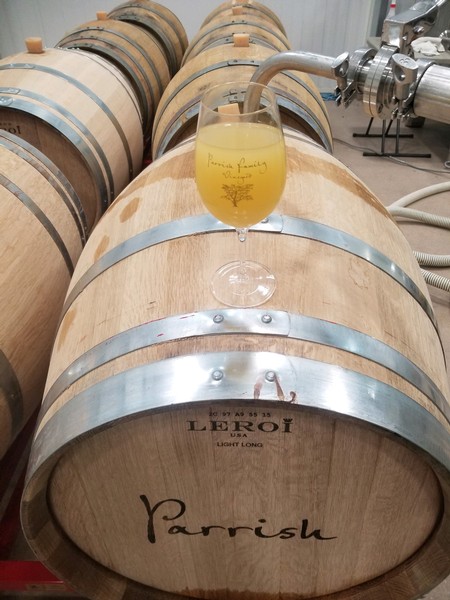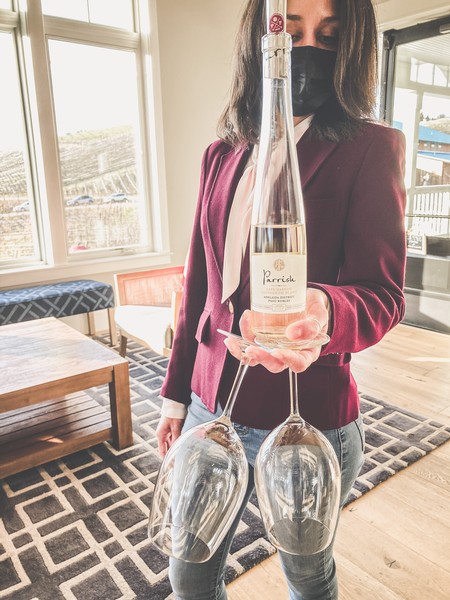Parrish Family Vineyard Blog
Keep up with the Parrish Family Vineyard!
Vines & Wines
Discover more about the Parrish vineyards & winery.
Wine & Food
Wine and food offerings and pairings.
Events
Learn more about upcoming Parrish events & specials!
Visit Paso Robles
Visiting Paso Robles soon? Learn of wineries, food, and lodging for your next trip to Paso Robles' wine country.
Meet Andrea & the 2020 Zinfandel!
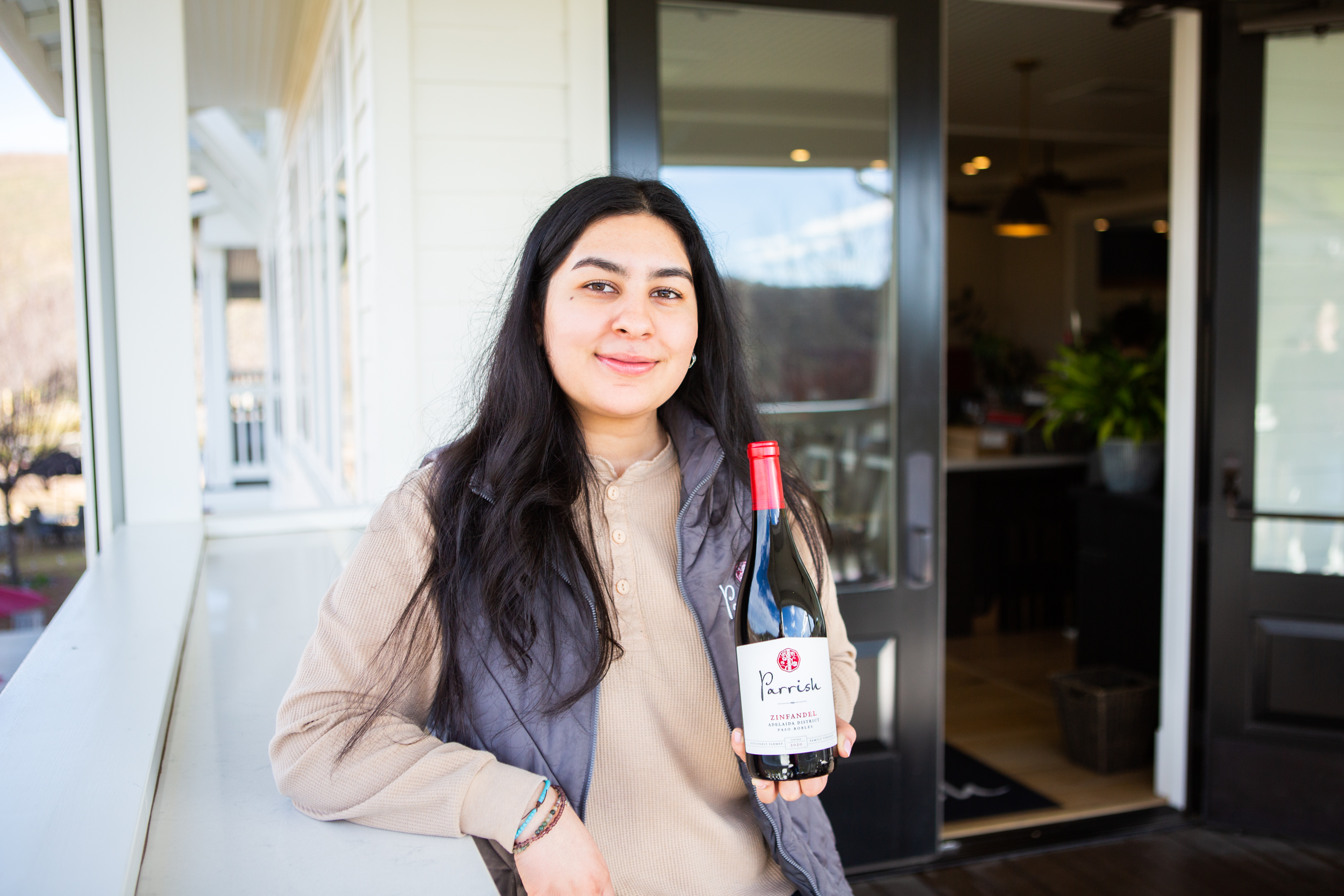
Meet Andrea, our Lead Tasting Room Associate, who recently joined the Parrish Family Vineyard team! She is excited to share her favorite wine with you - the 2020 Zinfandel. Andrea is a big fan of chocolate and she loves that the fruit forward Zinfandel carries notes of cocoa and dark chocolate. She also loves the luxury and elegance on the palate and says “Everyone should have a bottle…it’s that delicious.”
Andrea would pair the Zinfandel with a movie night! For her, horror flicks, friends, and freshly baked brownies are the perfect Zinfandel accompaniments.
Ready to create your own Zinfandel pairing and occasion? Here are the details on the 2020 vintage from our Winemaker, Cody Alt.
2020 Zinfandel
Owner and Winemaker, David Parrish is drawn to the Zinfandel variety in memory of his grandfather, Earl Henderson, who planted Zinfandel in the 1920’s. Grandpa Earl was able to acquire cuttings from the renown Paderewski Ranch in Paso Robles. He took the cuttings and planted them in Atascadero, where he managed 740 acres. Today, the Parrish Family grows a half acre of Zinfandel near the gates to the Tasting Room along Adelaida Road.
Tasting Notes: Red Cherry, Fresh Cranberry, Pomegranate, Cocoa, Leather, White Pepper
Pairing Suggestion: Pork Tenderloin with a Mushroom and Sage Stuffing
Release Notes: Released to Wine Club
AVA: Adelaida
Vineyard Notes: Head Trained and Spur Pruned. Half an acre.
Yield: 4 Tons
Alcohol: 14.75%
PH: 3.62
TA: 5.9 G/L
VA: .69 G/L
Fermentation: Stainless Steel with Pumpovers and Punchdowns
Oak Profile: 50% New French Oak - To allow the fruit to be the focus
Vintage Notes: The 2020 vintage is memorable much like the year for obvious reasons. Bud break was a little late due to rainfall in the Spring, but there were no frost issues with it being a warmer year. The flowering was normal and occurred in good conditions. Summer arrived with hot weather and record heat waves in August and September. This encouraged the 2020 harvest to begin and be completed quickly. During the beginning days of harvest, Paso Robles and most of the Central Coast was overcast with smoke from fires in Northern California. Despite this challenge, the Zinfandel was left to complete its ripening and the winemaking team worked their magic to save the wine from smoke taint. Therefore, the 2020 vintage showcases the hardwork and determination of our winemaking team to keep the quality that you have come to know and love at Parrish Family Vineyard.
Purchase the 2020 Zinfandel Here or Join the Wine Club!
Veraison has begun on our Paso Robles vineyard

Veraison is here! 🍇
Veraison signals the official onset of the ripening of the grapes. This is a period of time when varieties like our Cabernet Sauvignon and Grenache will shift from green, to rich tones of red and purple, while white grapes, such as Sauvignon Blanc and Chardonnay will transform into warmer hues of golden yellow. The cluster skins will soften, and the sugar levels will rise until they are just right for the picking.
"This is an exciting time because we know that once varaison is complete, we are not far off from harvesting and making our new vintage wines! We typically stress the vines during varaison by reducing the water to the vines. Stressing vines at this stage produce grapes that give wines deeper color and better overall better phenolics." - Winemaker, David Parrish
Stay tuned for more vineyard updates as we approach the harvest season!
See more and follow us on our Instagram HERE
Spring 2022 Club - New Wines
David, Cody, and Lupita share about two new wines that were released with the Spring 2022 Club Shipments, the 2019 Chardonnay and the 2018 Estate Cabernet Sauvignon. Play the video to learn more!
Winter in the Vineyard
Bare vines and dark soil spotted with green grass speckle the hillsides as puffy clouds pass overhead in the vineyard. The quiet landscape of the season, while simple, is beautiful. Despite the tranquility, there is still work to be done and activity begins weeks before the end of Winter.
The first task is composting. Tractors spread it between the rows of the bare vines, which awakes the vineyard to the season ahead. It takes 2 years for the compost to be used by the soil. That's correct, two years. I thought it would have been immediate, but microorganisms in the soil have to break it down. Once it breaks down it gives the soil carbon, nitrogen, and minerals that feed the vine's root system. We have to do this as the vine loses these elements every harvest. We use organic compost instead of chemical compost as it is sustainable. Organic compost also doesn't encourage overgrowth in the vineyard. As my dad shared, chemical compost can act like steroids for a vineyard. We want growth, but not that kind of growth.
The next task is pruning. The vineyard gets a haircut with the old wood being pruned. The pruner keeps two canes (old shoots) on the vine for this year's growth. It is a job that requires time and diligence. We prune later in the Winter to protect the vine from disease. Timing is everything in farming.
Once trimmed, the vine awaits bud break. It is my favorite time of year as the bare vines show life again (even though I know the vines are alive during the Winter...haha). Till then, bring a blanket or coat, and enjoy the tranquility at the tasting room.
Cheers!
-Cecily
Cody Alt Promoted to Winemaker at Parrish Family Vineyard!
 "Growing up I never knew what I wanted to do, coming from San Diego, I didn’t have any agriculture background,” Alt said. “I got into Cal Poly, and of course you have to declare your major, so I was willing to roll the dice and figured wine would be a fun avenue to explore. Wasn’t sure if I wanted to make it, grow it, or sell it, but I chose the winemaking side and fell in love".
"Growing up I never knew what I wanted to do, coming from San Diego, I didn’t have any agriculture background,” Alt said. “I got into Cal Poly, and of course you have to declare your major, so I was willing to roll the dice and figured wine would be a fun avenue to explore. Wasn’t sure if I wanted to make it, grow it, or sell it, but I chose the winemaking side and fell in love".
“What I wanted to do in college is intern in as many places as possible, be it a lab, vineyard, winemaking facility,” Alt recalls. “I wanted to be as well-rounded as possible. My goal was always to be able to run a facility all by myself, to be able to do everything. One of my favorite opportunities was interning in Germany with a biodynamic vineyard and a winemaker who won winemaker of the year a couple of years ago.
Among the many wines Alt has had the pleasure of producing during his career, one of his most exciting releases thus far was the 2017 Four Chords Bordeaux Blend from Parrish Family Vineyards. This complex and intense blend of Cabernet Sauvignon, Malbec, Cabernet Franc and Petit Verdot garnered a 95-point rating from Wine Enthusiast and is a club member favorite!
“I saw an opening in our program at Parrish, we had the Estate Cab, our Reserve Cab and the Silken, but I knew the other varietals we grew and were making wines with would complement each other in a blend,” Alt says. “In the Four Chords, we were very purposeful with the development. Petit Verdot gets the mid palette, Malbec will get that fleshiness which evens it out, the Cab is the main structural component that makes it angular. I thought people would be interested in this blend, and it is very different from anything else we make. That wine was also a real test of my blending skills.”
Alt has had the privilege of working with some of the best names in Paso Robles wines, among them David Parrish. “I met David at a Taco Tuesday event years ago and he offered me a position here with Parrish Family Vineyard, and at the time I turned him down since the offer was close to harvest and I was working with another winery,” Alt recalls. “But eventually I came to my senses and found a way to join the team. David is a great mentor, he’s taught me a lot and given me every opportunity to succeed.”
“Hopefully my love and care for these wines show through,” he says. “That’s kind of your goal as a winemaker, that your passion can show through in that glass and make people happy.”
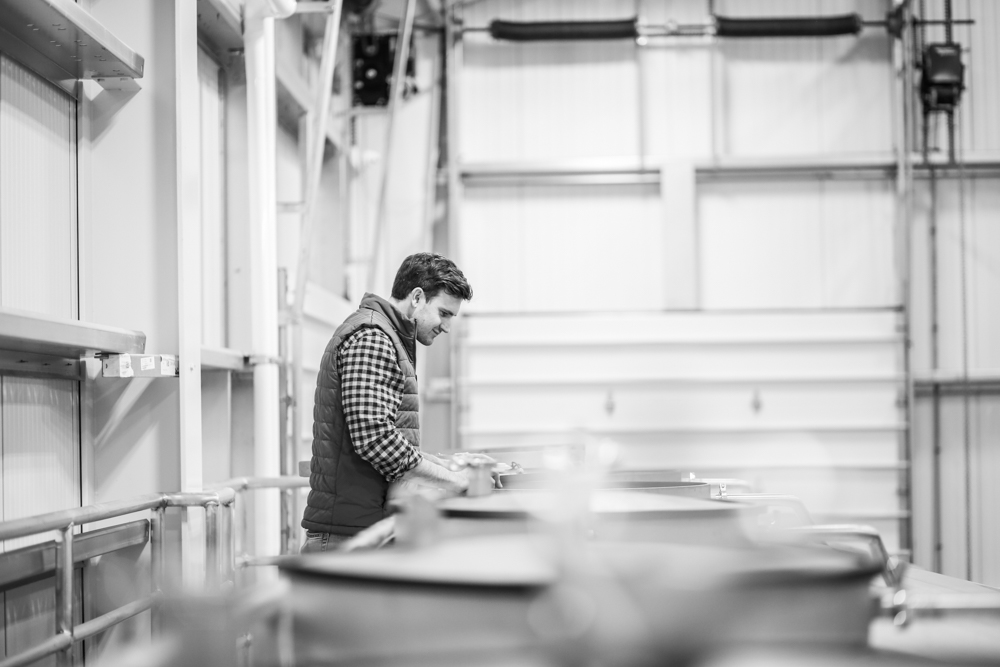
Getting the Dirt on Our Soil
A few weeks ago we had a tractor tilling between the rows of our Adelaida vineyard and while that doesn't sound very exciting, it brought up an interesting conversation about our soil management.
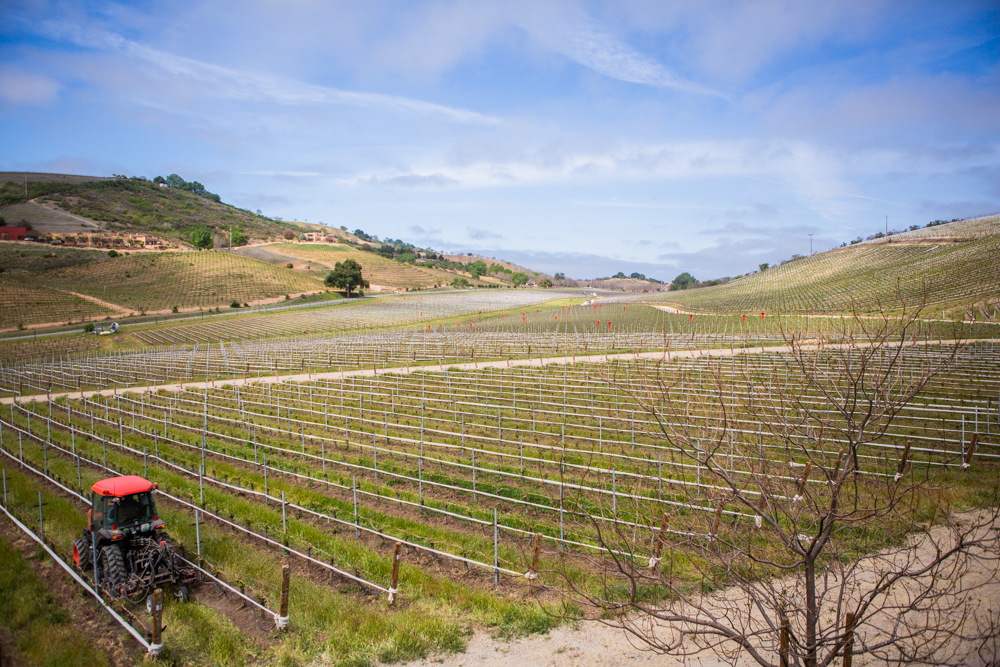
Parrish Adelaida Vineyard
My dad shared with me that we have been a part of a soil project the last couple of years that was implemented by the local RCD (a.k.a. Upper Salinas - Las Tablas Conservation District) and funded by the CDFA (a.k.a. California Department of Food and Agriculture). While my dad might have told me this before, it was like hearing new information and I had to know more. So, he directed me to our vineyard management company, Vineyard Professional Services (VPS), to fill me in. The Chief Operating Officer of VPS, Linnea Smith, reached out to me with a great document (thank you, Linnea!).
VPS has been working with the RCD to study the impact of middle row management and soil health over four years (2021 marks the last year). The reason for this study is that generally vineyard managers till between vineyard rows to reduce weeds and pests as they are competition for the vineyard's water...a precious resource. The problem with this practice is that it is expensive, time-consuming, and impacts erosion control. The updated practices are easy to implement and can be applied by any vineyard in California.
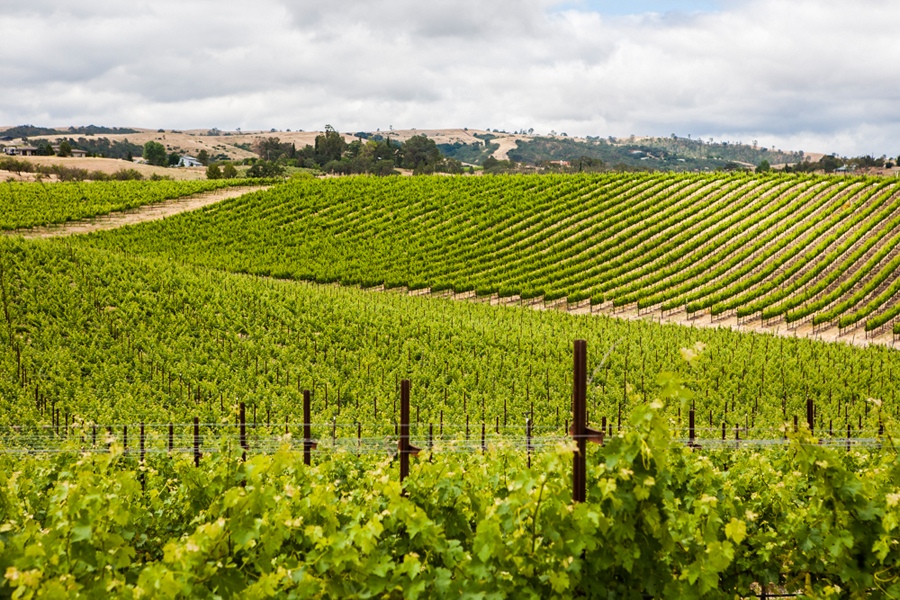 Parrish Templeton Vineyard
Parrish Templeton Vineyard
In 2018, Parrish Family Vineyard's Templeton and Adelaida vineyards were brought into the trial along with three other local vineyards with diverse terroir; soil, and microclimates. In the trial, they tried different cover crops; brome grasses and barley. Then they tried a mix of mowing versus discing. The RCD took soil samples each year and observed the changes in the soil. They took note of the amount of organic matter, nutrient levels, and soil biology and diversity. The hope for the project is that it will lead to an increase of organic matter, improve water retention, and long-term storage of carbon in the soil.
In simple terms, the changed soil practices will mean less water, improved water quality, and fewer pests...overall making the vines productive. That's a win, win, win! This project shows how important soil is in the vineyard. Soil needs to have nutrients and water retention to feed the roots of the vines...otherwise, you will see problems with the season's development.
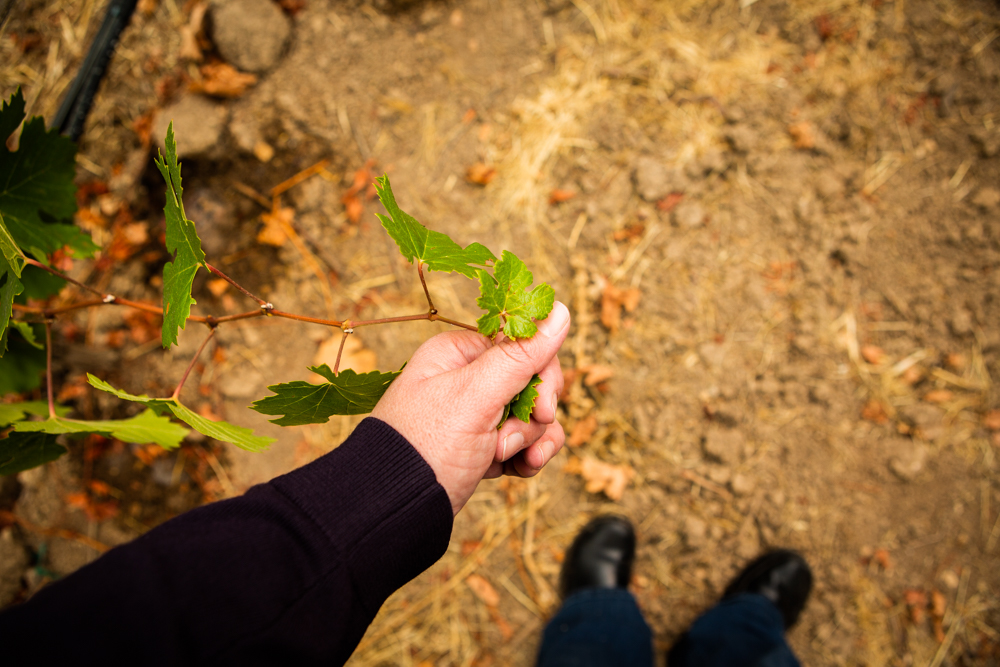
Thanks to the RCD and VPS for including Parrish Family Vineyard in these important trials. It is another example of the Ag Industry innovating and improving to meet the challenges around them. The farmer has always had to adapt and always will, due to climate, disease, pests, and economics.
We'll see how 2021 concludes for this project, so for now, we will wait with a glass of wine and appreciate the efforts as the wine starts in the vineyard.
Cheers!
Cecily Parrish Ray
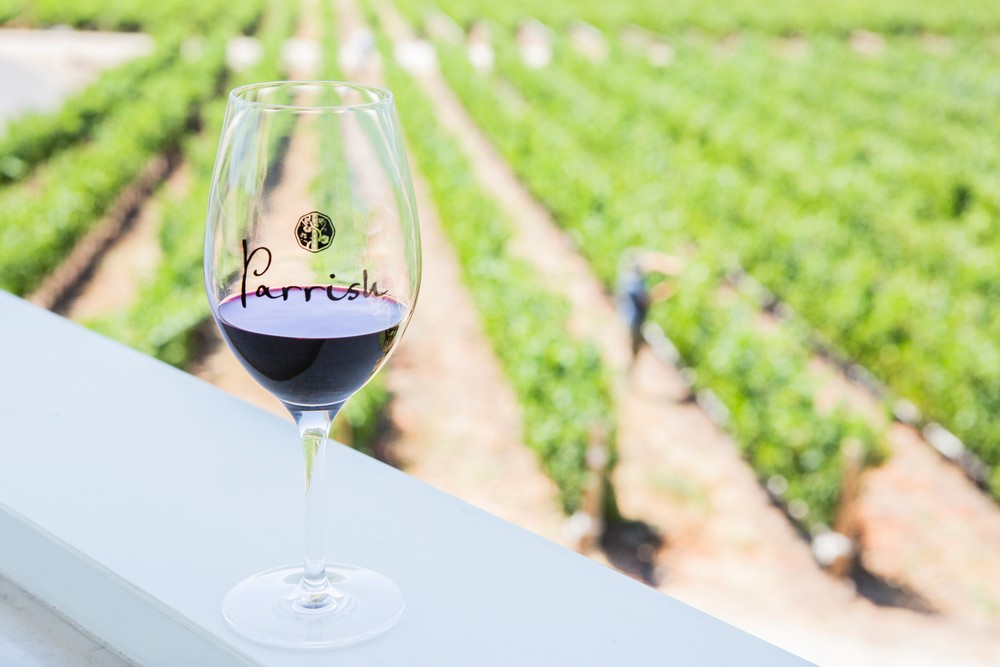
Late Harvest Sauvignon Blanc - Start to Finish
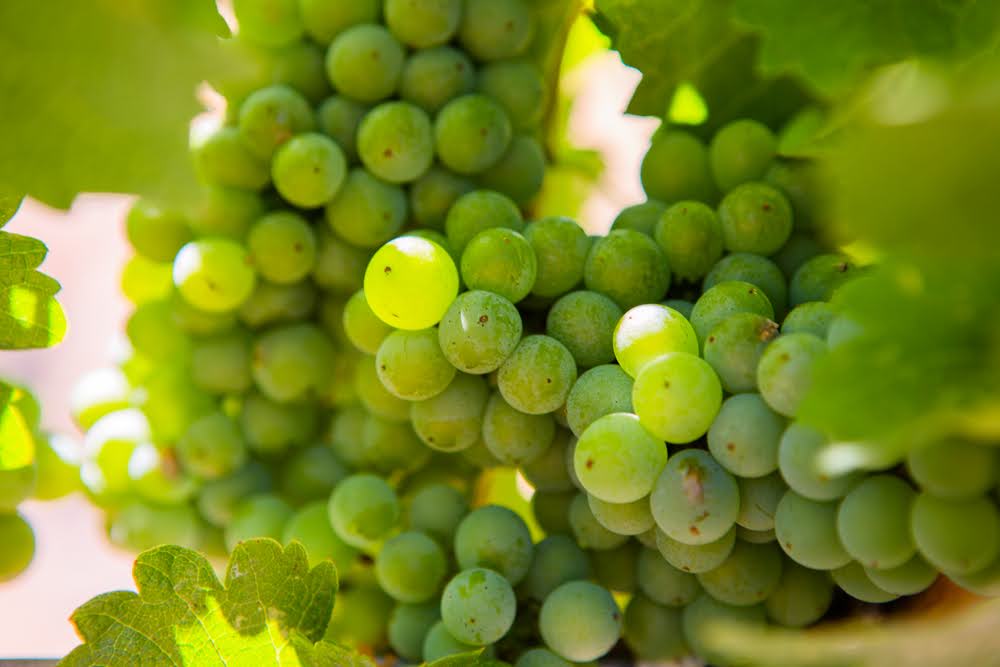
We have been growing our Sauvignon Blanc at the Adelaida vineyard since 2013, while we had been using the fruit to produce our Estate Sauvignon Blanc since 2016, the winemaking team was compelled to try something new. They wanted to do a sauterne-style wine as it would be a nice addition to our lineup as we didn't have a sweet wine.
What is a sauterne? Sauternes are from the Bordeaux region of France and they feature not only Sauvignon Blanc, but also Sémillon and Muscadelle. They tend to be heavier in body, sweet, and have notes of stone fruit, tropical fruit, florals, toasted sugar, coconut, and baking spices. It all depends on the fruit and barrel program, as you do age this style in barrels to add the wonderful body and secondary flavors.
Back in 2019 we took the leap and held back some Sauvignon Blanc clusters from the main harvest in September and allowed the grapes to stay on the vine to develop more sugar. In November 2019, we harvested the remaining Sauvignon Blanc and they were raisined with colors of gold and pink-purple. Hence the term, Late Harvest because it was last to be harvested and allowed to develop more sugar, or higher brix (measurement of sugar). We normally pick at 21 brix for the Sauvignon Blanc, but for this wine, we picked at about 35 brix.
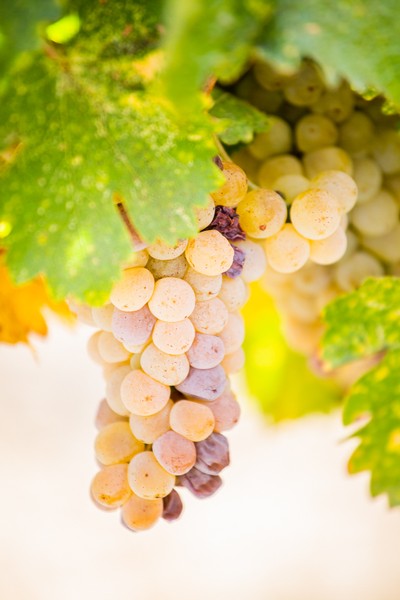
Below is a video we recorded in the middle of the processing the Late Harvest Sauvignon Blanc with Cellar Master Ethan and Assistant Winemaker Cody sharing about this new wine:
*I'm sorry about the background buzz from the winery!
One thing you may notice from the video is the vibrant color. It looks like orange juice! That color fades away during fermentation. After talking with Assistant Winemaker Cody, I learned more about why young wines have a cloudy color that is nowhere near what the finished product will look like. This is known as browning and it's a normal thing that happens during pressing wine. The oxygen dissolves causing the color. It also has some lees and sediment that are stirred up making it not as clear. The CO2 that occurs in fermentation helps lift the oxygen and at that point begins to change the color to be more clarified and golden rather than yellow-orange.
During fermentation, the winemaking team used a weaker yeast so the process would stop at 15-16% alcohol and allow there to be residual sugar in the wine.
What is residual sugar? This is what makes wine sweet. Dry wines have no residual sugar because they have had all the sugar eaten up by yeast during fermentation. Sometimes wine tasters think that sweetness in a dry wine is sugar, but that is most likely the fruit notes of the palate. So, if you like wines that are "sweet" in a dry wine then you would want to look for wines that fruit-forward, less tannic, and have spent time in stainless steel or little time in the barrel.
After processing, the wine then journeyed to oak. The Late Harvest aged in 35% new French oak and 65% neutral oak for about 16 months. This gave the wine more body than our traditional Sauvignon Blanc. Typically, the winemaking team ages Sauvignon Blanc in stainless steel to keep it light and crisp, whereas the Late Harvest is aged to be heavier bodied with more creaminess and caramelization.
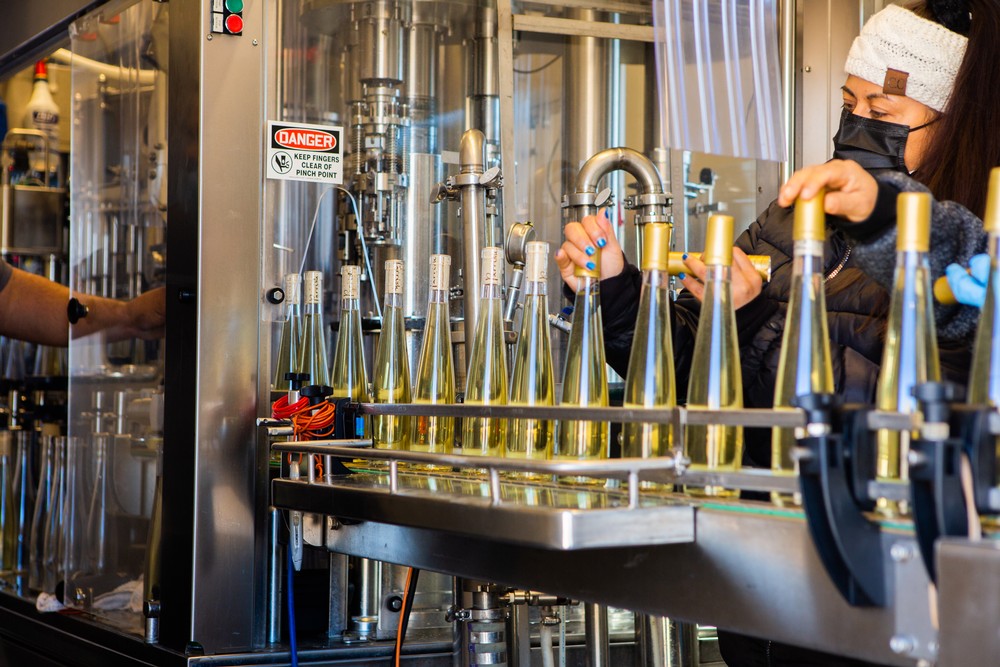
The day we bottled the Late Harvest Sauvignon Blanc, I got to taste it and it was delicious. The notes I got were apricot, lemon and grapefruit jelly candies (think of those Sunkist ones), cream soda, toffee, and then a beautiful brush of acidity. I love the acidity in this wine as it helps balance the body to keep it from becoming cloyingly sweet.
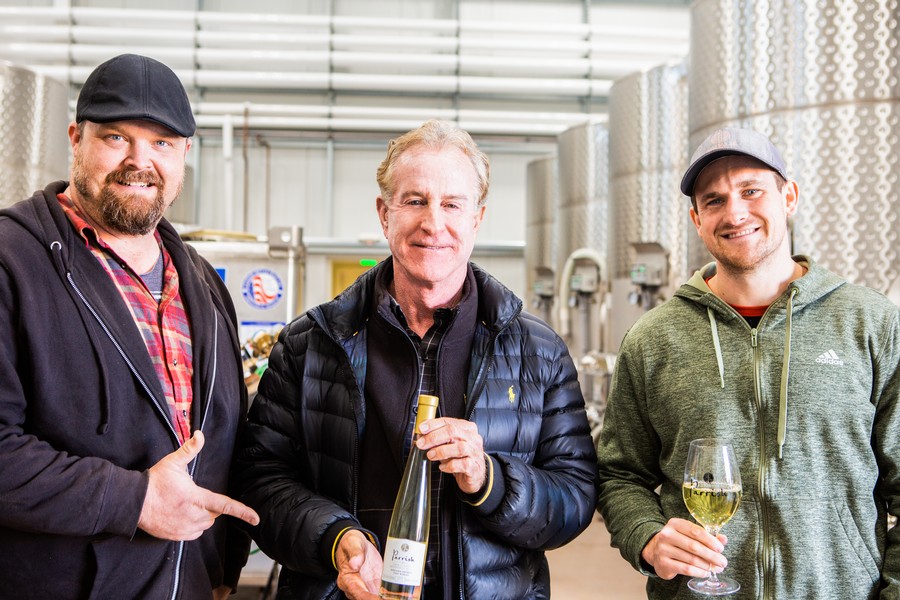
For the winemaking team, it is such a rewarding day to take the wines that have been worked on for a couple of months or years and finish them. They get to see the once grapes transformed to wine and then placed in the bottle. It is also rewarding for the team to do something new and have it turn out to be wonderful. No longer a thought, but a reality.
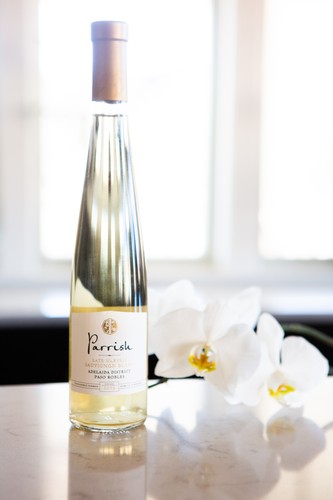
As far as packaging, it is different from our other bottles as the label is with gold accents and the bottle is smaller, 375ml (rather than 750ml). Our whole team voted on the bottle shape for a few days in bottle planning. It was very sophisticated as we lined up 2 options on the counter and then did a tally on post-it notes. It became a bit of a competition, jokingly, as one bottle was being picked by a landslide and the other was lonely with 1 tally mark. But that team member began convincing other team members to bring them to her side. Haha. Alas, the popular bottle was chosen. It was a good attempt! In summation, it was a team effort in picking the packaging.
So, importantly, how should you serve this? Chilled. I would recommend a smaller glass so you can easily access the nose. This will age well. I have yet to try it after being open a couple of days, but feel this would last longer open than a stainless steel, crisp Sauvignon Blanc. Regardless, this wine will age in the bottle for some time.
And then what do you pair it with? You can do dessert with this wine. I would say tarts would be lovely with it like a lemon, coconut, or almond. Cheesecake would be simple and decadent with the Late Harvest. For the release weekend, Estate Chef Samantha paired it with aphrodisiac macarons; fig & pistachio, strawberry balsamic, and raspberry chocolate (awesome!). The fig & pistachio macaron was my favorite with this wine, so taking inspiration to home, try thyme mascarpone figs with roasted pistachio and honey drizzle.
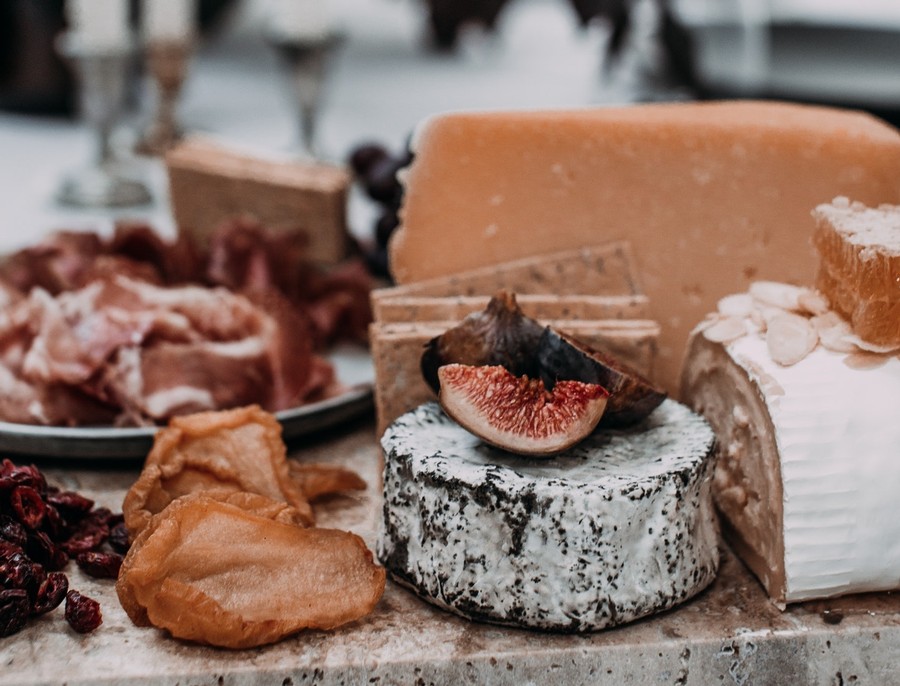
And then let's not forget cheese & charcuterie as this would be beautiful with a board for starters or dessert, I mean why not! Here are some thoughts; baked brie, Fromarer D'affinois Blue Cheese, St. Agur Blue Cheese, Cypress Grove Humboldt Fog, Asiago Rosemary, Idiazabal, Manchego, Honey Bee Goat Cheese, Oakdale Lemon Quark, Foie Gras, Duck Prosciutto, Alle Pia Calabrese Salami, and Smoking Goose Spruce & Candy Salame. Add some fun accouterments like quince paste, bacon jam (Olivas de Oro does one), Marcona almonds, dried nectarines, dried cherries, homemade candied pecans, pumpkin seeds, shortbread biscuits, sourdough, or brioche toast...you'll be set!
I hope you enjoyed learning more about this new wine. Cheers, and if you're a club member, you can pick up this wine here!
-Cecily
Winter in the Vineyard & A Quick Look at the Year
Winter is upon us with its calm and cold presence ushering in a quiet time for the vines. I have a lot of times called this their sleepy time, but in more formal words, the vines are currently dormant. It is a perfect time for dormancy as the temperatures can drop below 30 degrees. Even in Paso Robles, California we can get freezing temperatures at night and early mornings. So, dormancy protects the vineyard from being hurt by the freezing temperatures.
The vines have gone through senescence after the hard work of harvest, which is the dropping of leaves. Since the leaves are now covering the floor of the vineyard, it indicates that the vines have stopped photosynthesis (energy production). The vines don’t die because they have stopped photosynthesis, but rather they depend on the stored energy in their trunk and roots. This brings up one of the important practices for a vineyard and that is soil health. The soil is what provides nutrients to the vines. During this season we will work on the soil by applying fertilizer and/or planting cover crop seeds (i.e. flowers, vetch, or barley).
Shortly, we will also work on pruning the vines to prepare them for the growing season. With pruning, the prior year’s canes are cut back leaving the best canes for the new year’s shoots. There won’t be a lot of activity with the vines until bud break which usually occurs in April and marks the start of the growing season. Below I have dug up a timeline I made years ago of the stages of growth throughout the year highlighting the important moments for the vines. The months listed are approximate as every year is different due to the weather.
My hope this year is to share more information about the vineyard when they are happening, so we’ll see how I do!
Cheers!
Cecily Parrish Ray
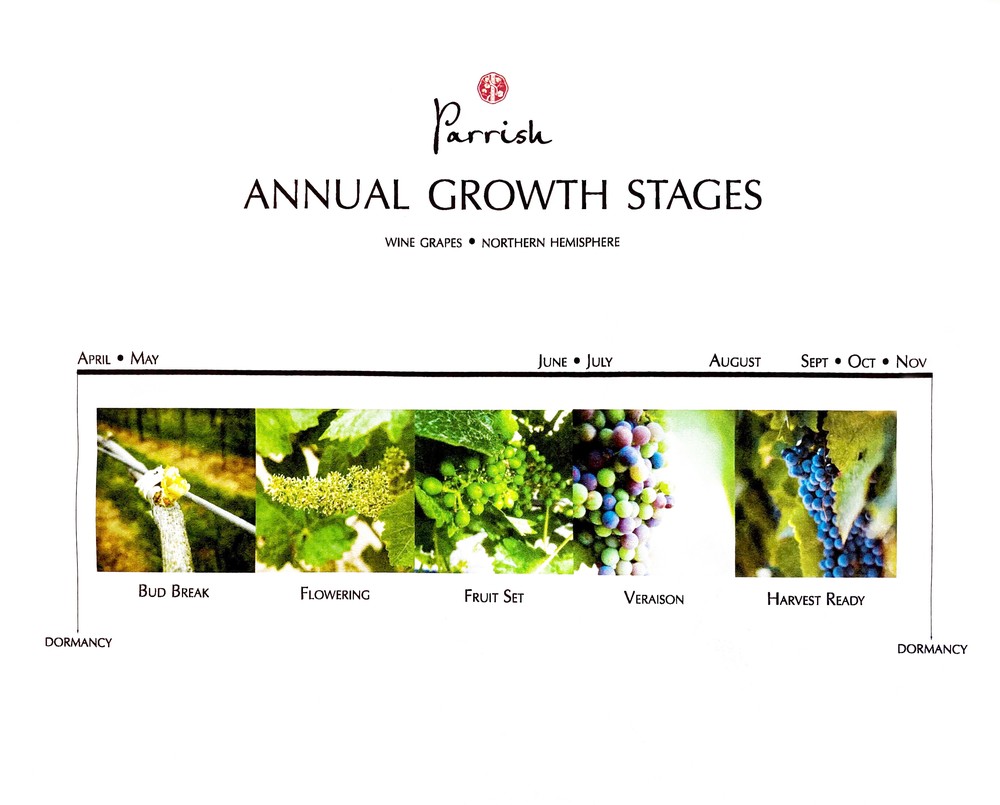
David Parrish on The Importance of Leafing
Winemaker and owner David Parrish talks about the importance of leafing the vineyard and why it promotes healthier vines and better grapes.
The Importance of Mechanical Cultivation
Tilling from Parrish Family Vineyard on Vimeo.
It's a busy time of year in the vineyard as crews are working with fruit set and the abundance of healthy leaves on the vines.
Winemaker David Parrish took us into the vineyard in this short video to explain the Mechanical Cultivation process. It's an important part of our sustainability efforts because it keeps us from having to spray anything on the vines or the weeds. It's an expensive process and not one that a lot of wineries are able to afford, but it does produce healthier vines which create better wines.
Click here to watch the video and don't forget to have your volume up!
